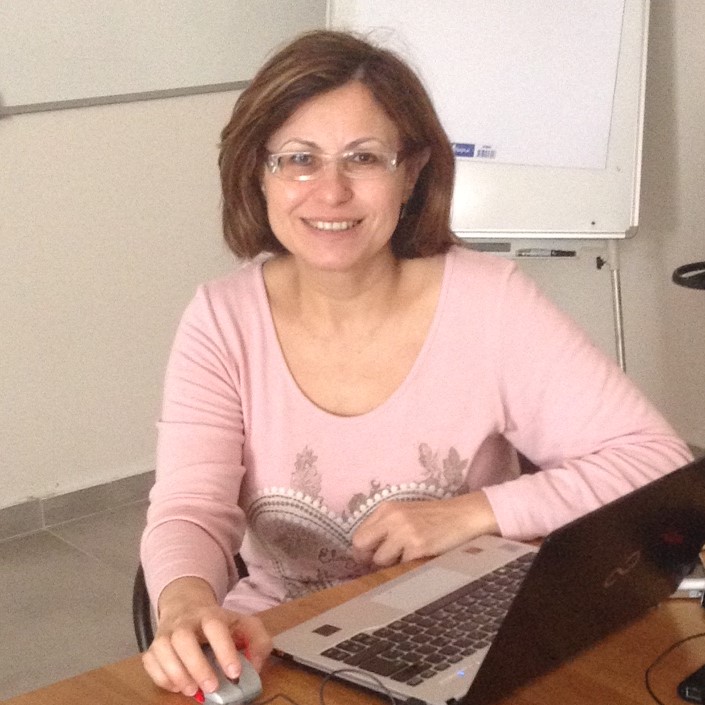Maria Kafesaki
University of Crete and Forth-IESL, GreeceFor the ground-breaking numerical demonstration of large gaps for optical and acoustic materials and for seminal contributions to photonic crystals, metamaterials science and nanophotonics.

Maria Kafesaki always wanted to learn new things but did not initially connect that drive with a career as a scientist. In her childhood, she wanted to be a high school teacher. She grew up in a small town in Greece where a woman scientist, especially in natural sciences or engineering, was not common. However, by the time she reached her third year of undergraduate studies, she knew she wanted to spend her life in the scientific field. She could not abandon science for a “regular” job.
Although there were times when she wanted to give up, she realized that she did not want to let go of the excitement of science. Maria feels lucky that the obstacles she faced could be overcome with hard work, determination, and the support of her colleagues.
Currently, Maria is working for the Department of Materials Science and Technology of the University of Crete and for the Foundation for Research and Technology Hellas (FORTH), Institute of Electronic Structure and Laser (IESL), in Greece. She is member of the Photonic, Phononic and Meta-Materials (PPM) group. She finds her field a very exciting field of research because there is still “space for basic research, for finding novel physical phenomena and associated possibilities” which is rare in scientific fields with a longer research history.
Finding something interesting, novel and highly unexpected is her biggest research challenge. She focuses on electromagnetic metamaterials, i.e. artificially structured materials with unusual and novel electromagnetic properties, and performs analytical calculations or computer simulations to discover novel phenomena. In these materials the material properties depend on the geometry of their subwavelength in scale building blocks and, thus, can be engineered, in many cases, at will, to create novel and exciting macroscopic properties. Maria says that the coolest discovery she has made, which occurred as part of a team, was “the realization and demonstration that one cannot achieve strong magnetic response at arbitrarily high frequencies, and the identification of ways to achieve strong high-frequency magnetic response.” She finds that her field has the right combination of challenge and excitement to keep her motivated and interested.
Technology, according to Maria, offers great tools and potential for scientists to establish and maintain collaborations, read interesting papers, and stay current on advances in the field, especially if traveling to a conference is not possible. Maria sees her field of research continually growing and deems this a great sign of its potential in research and applications. She is happy about these developments and thrilled that the initial promises of the field seem close to becoming real applications.
Inspired by a paper from Fellow Prof. Nikolay Zheludev, University of Southampton, UK, and Nanyang Technological University, Singapore, which featured the “meta-material Tree of Knowledge”, she likes to visualize her field as a growing tree with new branches emerging and bearing ripening fruit. Moreover, the same metaphor applies to optics and photonics as a whole. More and more people are realizing the exciting opportunities offered by the unique properties of photons. The whole field is attracting more interest and is being increasingly utilized in applications.
Maria credits OSA journals and newsletters with keeping her current on state-of-the-art technologies in her field and uses all of OSA’s information channels. Becoming an OSA Fellow was her first personal international distinction, which made it a special honor.
When asked about advice for someone just starting out in their career, she says, “Be patient and persevere—new discoveries do not usually come with the first attempt.” She also says that it is important to keep a broad overview of the field as well as related or neighboring fields.
Profile written by Jeanette Gass
